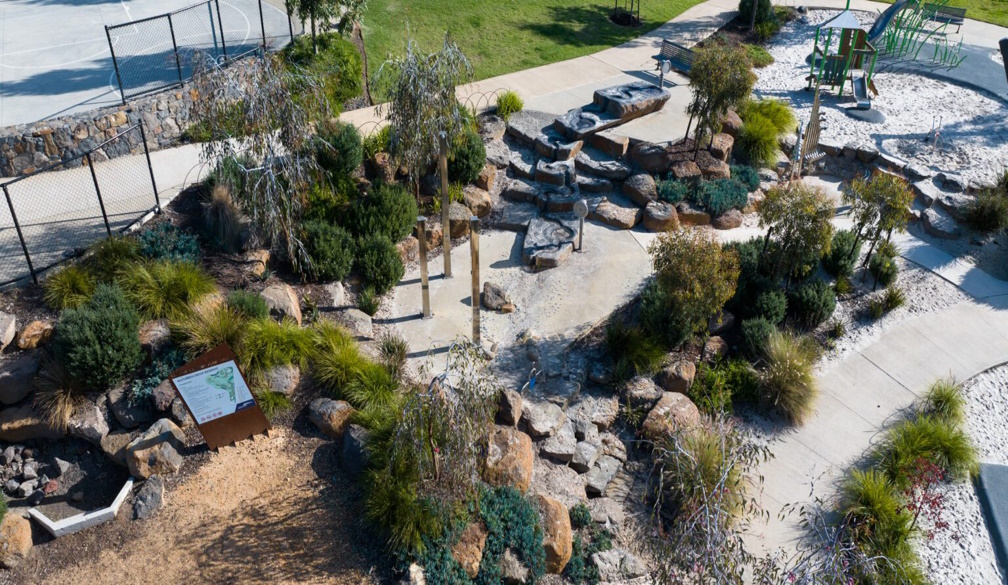Resilient and Adaptive Landscapes: Rethinking Urban Design for A Changing Climate

Increasing climate instability requires urban planners and landscape architects to focus their designs on survival instead of solely on beauty or utility. Floods, heatwaves, and long-term droughts have become regular occurrences instead of exceptional events. Because of persistent weather fluctuations, our cities are undergoing physical and philosophical changes. Professionals throughout the building sector now focus on creating adaptive landscapes that can withstand and adapt to unpredictable environmental conditions.
The current transformation extends past basic actions like tree planting or turf installation to replace concrete. This approach goes beyond basic methods by creating interconnected urban systems that rethink city-nature relationships. The transformation is driven by the combined implementation of permeable surfaces, green infrastructure, and native plantings, which create a resilient toolkit for urban areas.
Permeable surfaces: Letting the ground breathe
Traditional impervious pavements exacerbate urban flooding since they channel water into overburdened drainage systems. Permeable surfaces provide a pathway for water to enter the ground while traditional pavements prevent this natural process. Think about using porous pavers together with gravel walkways and permeable asphalt substances. Through minimising water runoff and contaminant purification, these materials restore groundwater levels while mimicking natural landscapes.
Melbourne and Sydney have launched pilot programmes for permeable surfaces in parks and parking areas, as well as laneways. The results speak volumes: the implementation of permeable surfaces yields lowered stormwater pressure and decreases surface temperatures while also creating more breathable urban spaces.
These strategies are also increasingly being incorporated into urban residential development projects, where stormwater resilience and green liveability are becoming key selling points
Green infrastructure: Nature as an asset, not an afterthought
Green infrastructure combines ecological processes with urban development strategies. Green roofs, along with rain gardens, bioswales, and urban wetlands, serve as systems for water management while delivering both aesthetic appeal and biodiversity advantages. These features improve urban living by serving as essential green lungs that enhance air quality and amenity beyond water management.
Consider how New York City’s Queens Botanical Garden underwent its transformation. The site, previously vulnerable to flooding, operates as a functional ecosystem that collects stormwater using interconnected green roofs and vegetated channels. This garden functions as purpose-built infrastructure designed to deliver performance results.
Native plantings: Resilience rooted in place
Local plant species play a critical role in combating climate disruption. These plants have adjusted to their local environment and need less water and fertiliser while requiring minimal upkeep compared to non-native species. They supply essential living spaces for pollinating insects and surrounding wildlife, which helps maintain biodiversity in urban areas.
Berlin's public landscaping now gives priority to indigenous plants as a strategy to mitigate higher temperatures while sustaining ecological connections. Climate-resistant meadows and easy-care shrublands dominate the streetscapes and public parks throughout the city establishing strong green corridors.
Sponge cities demonstrate a new approach to urban water management by absorbing rather than resisting rainfall
The “sponge city” stands as the most compelling design paradigm innovation originating from China, while gaining worldwide acceptance because these built-up areas are engineered to absorb and store rainwater for future reuse and turn stormwater into a useful resource.
The Big U initiative covers Manhattan's southern tip with berms and floodwalls that function as public parks and spaces. Berlin uses old industrial sites to create floodable parks and water retention basins, which serve both community needs and climate objectives. Sponge city thinking flips the script. These cities adopt an approach that involves receiving water and blending it into their surroundings through slow movement rather than rapid expulsion.
What this means for business
Developers, together with councils and investors, must now treat climate-adaptive landscapes as regulatory necessities alongside financial and reputational requirements. Governments are tightening stormwater management policies. Insurers are recalibrating risk assessments. Communities now require functional spaces that need to perform effectively, along with their aesthetic value.
Implementing resilient design principles in landscapes enables businesses to achieve multiple financial benefits. The reduction of water and energy consumption leads to lower operational costs. The asset value goes up when spaces become functional and visually appealing throughout all seasons. Businesses that demonstrate leadership in sustainability and climate preparedness increase their brand equity.
For those involved in landscape delivery, particularly a landscape construction company, aligning with these climate-responsive design trends is becoming both a competitive edge and a long-term investment in environmental performance.
Looking ahead: Landscapes that live and learn
The urban landscapes that achieve success in the future will need dynamic intelligence and local adaptation capabilities. These systems will withstand climate disruptions while adapting to changing conditions. Future urban landscapes require closer teamwork between planners, ecologists, engineers, and community members. Integrating sensors with data feedback loops into green systems allows real-time performance monitoring. The future approach to urban design requires treating nature as a fundamental component of infrastructure rather than just a decorative element.
Our cities need to adapt to the changing climate. We build resilience through gardens and wetlands, along with streets designed to absorb and filter water rather than by constructing fortresses and barricades. Cities that thrive in an environment with rising waters and warming skies will be those that understand how to collaborate with nature rather than oppose it. The blueprint is here. The question is: Who will build it?










